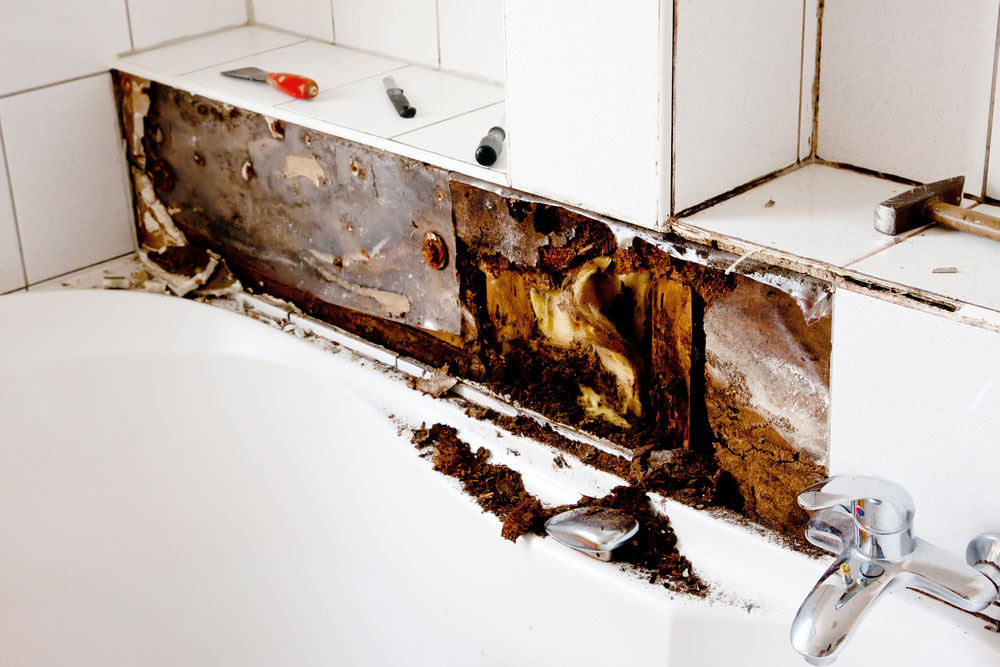The content following next in relation to Looking for Signs of Water Damage in the Bathroom is fairly enlightening. Try it and make your own assumptions.

The bathroom is exceptionally prone for damp accumulation and also prospective water damage due to the constant use of water in it. This article supplies basic evaluation strategies to help identifying water damage hazards.
The regular use of water in the bathroom makes it extremely at risk for wet buildup as well as prospective water damage. By inspecting it regularly, you can reduce water relevant problems.
The complying with set of inspections is very easy to carry out and should be done as soon as in every 3 months in order to keep your bathroom healthy as well as to avoid potential water problems brought on by the tub, the shower, pipe joints and also plumbing, sinks, cupboards, as well as the toilet
Do not forget doing these evaluations and also be extensive while performing them. Remember that these basic evaluations can conserve you a great deal of money by giving very early indications for water damages
Tub and Shower
The shower and also tub call for unique attention and also maintenance. Examine the tiles and also change if split. See to it that there is no missing out on cement between the tiles. Evaluate as well as replace fractured caulking at joints where the walls satisfy the flooring or the bathtub. Obstructed drains as well as pipes issues will certainly avoid the tub from drying as well as might indicate severe troubles beneath the tub. Consult with an expert immediately to avoid architectural damages. Take note of discolorations or soft locations around the bath tub walls as they may show an internal leak.
Plumbing
Signs for water damages are tough to spot considering that the majority of pipes are set up inside the wall surfaces.
Pay unique attention to flooring as well as wall surfaces moisture and stains as they may suggest an unseen plumbing problem. Inspect moisture levels in adjacent areas as well.
Sinks as well as Cabinets
Sinks and also cabinets are subjected to wetness and also humidity daily as well as are usually overlooked. Examine on a regular basis under the sink as well as on the kitchen counter above it. Repair any type of drip in the catch as it might recommend drain problems. Browse the sink, slow-moving draining pipelines might indicate a blocked drain. Replace sink seals if they are split or loosened.
The Commode
The commode is a vulnerable water junction. Examine the water lines and also search for leakages around the toilet seat, in the hose, and under the water tank. If you spot any signs of moisture on the floor around the toilet, check for leaks in the toilet edge and also container seals.
Realize that hanging commode dish antiperspirants raises the possibilities for blockages.
Water Damage Signs In The Bathroom To Avoid Cleanup
Musty smell
This is one of the easiest signs to catch because musty smells are so odorous. The damp, earthy, moldy smell should be a big red flag. The smell will develop when moisture gets trapped in surfaces, and begins to facilitate mold growth. Leaking pipes under cabinets, inside walls, and behind shower fixtures will cause moisture to stay trapped and not dry, which will lead to mold growth and spread. As soon as you notice any musty smells in your bathroom, have it checked for hidden water damage and cleanup signs.
Visible mold
If the smell isn’t there to give it away, sometimes you will actually see mold growth. Finding mold in your bathroom is a serious problem, because mold is very harmful to your health. By the time mold growth is visible, it also means that water damage has already occurred and been present for some time. The only way the mold problem can be resolved is to find the source of the moisture and get it stopped. To safely and adequately remove mold, you need to have professionals handle the remediation. Do not waste any time in getting mold problems addressed, fixed, and sanitized so that you can protect you and your family from the many respiratory symptoms caused by mold exposure.
Damaged floors
Bathroom floors should be able to withstand some exposure to water while still remaining in good condition. However, when excess exposure or water leaks occur, they will begin to damage even the most water-resistant flooring. If you notice any cracking, bubbling, staining, or warping on your bathroom floors, there is probably a water leak somewhere causing the distortion. If you notice areas of the floor have become softer, or even have a spongy feeling, there is probably damage to the subfloor. Subflooring is typically made up of plywood. When plywood is exposed to water or moisture, it will absorb it. Once it has become saturated, the weight of the excess water will cause the wood to swell and soften. Check the floors in your bathroom frequently to catch any of these sings before they lead to damaged subflooring.
Changes on walls
When water leaks behind walls, it will cause changes in the drywall. Peeling plaster, blistering paint, and soggy wallpaper are all good indicators that excess water is building up behind the wall. Water leaking behind drywall will cause it to swell and be soft to the tough. If you start to notice gaps along the trim of your walls, or where tile meets the wall, it could also be a strong indicator that there is a leak behind the wall. Any changes, distortion, or damage on the walls should be evaluated as soon as you notice it to prevent further water damage and cleanup.

As a keen person who reads on Looking for Signs of Water Damage in the Bathroom, I assumed sharing that editorial was worthwhile. So long as you enjoyed reading our article plz remember to pass it around. I am grateful for your time. Visit again soon.
Book Your Service